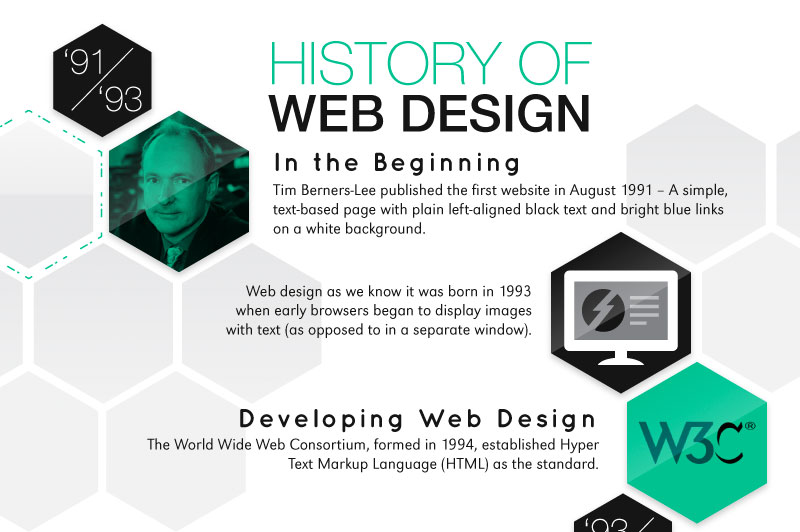Eager To Discover Just How Web Site Layout Has Transformed In Time? Study The Advancement From Simplicity To User-Focused Experiences
Eager To Discover Just How Web Site Layout Has Transformed In Time? Study The Advancement From Simplicity To User-Focused Experiences
Blog Article
Content By-Tobiasen Trolle
In the past, web sites were straightforward and focused on info. Navigating was straight, and style was for desktops. Now, user experience is vital. Information overviews styles for simple navigation. Receptive designs match various gadgets. Today, dark setting reduces stress, and minimalist menus improve navigating. https://thehill.com/shopping/592955-build-a-digital-marketing-strategy-with-this-35-elearning-bundle/ involve individuals, and bold visuals stand out. AI combination enhances interaction. See exactly how style has progressed to boost your on the internet trip.
Very Early Days of Web Design
In the very early days of website design, simplicity preponderated. Sites were basic, with minimal shades, typefaces, and layouts. The focus was on providing info instead of showy visuals. Customers accessed the net via sluggish dial-up connections, so rate and performance were vital.
Navigating food selections were straightforward, usually situated at the top or side of the web page. Internet sites were created for computer, as mobile browsing had not been yet prevalent. Material was king, and developers prioritized easy readability over intricate layout components.
HTML was the primary coding language utilized, and designers had to work within its restrictions. Computer animations and interactive attributes were marginal contrasted to today's requirements. Websites were static, with little dynamic content or customized user experiences.
Surge of User-Focused Style
With the advancement of internet site design, a shift towards user-focused design concepts has ended up being increasingly famous. Today, developing websites that prioritize individual experience is crucial for engaging site visitors and attaining business objectives. User-focused style includes understanding the demands, preferences, and actions of your target market to tailor the website's design, material, and features as necessary.
Designers now carry out comprehensive study, such as user surveys and functionality screening, to collect understandings and responses directly from users. This data-driven strategy assists in creating intuitive navigation, clear calls-to-action, and visually enticing user interfaces that reverberate with visitors. By putting the customer at the center of the style process, internet sites can deliver a much more personalized and enjoyable experience.
Receptive style has likewise emerged as a key element of user-focused design, guaranteeing that web sites are optimized for numerous gadgets and screen sizes. This versatility improves access and functionality, dealing with the diverse methods customers communicate with internet sites today. Fundamentally, the increase of user-focused layout symbolizes a shift in the direction of producing electronic experiences that prioritize the needs and assumptions of the end user.
Modern Trends in Website Design
Discover the current fads shaping web design today. One popular trend is dark mode layout, offering a smooth and modern appearance while minimizing eye stress in low-light settings. An additional key fad is minimalist navigating, simplifying food selections and boosting customer experience by focusing on essential elements. Integrating micro-interactions, such as computer animated buttons or scrolling impacts, can create a more engaging and interactive website. Receptive style stays important, ensuring smooth customer experiences throughout various tools. Additionally, using vibrant typography and asymmetrical layouts can include aesthetic passion and accentuate particular content.
Integrating AI innovation, like chatbots for customer support or tailored recommendations, boosts individual interaction and streamlines processes. Ease of access has additionally become a substantial pattern, with developers focusing on inclusive layout techniques to cater to diverse customer requirements. Accepting sustainability by maximizing internet site performance for rate and efficiency is an additional arising trend in web design. Collaborating with customer responses and data analytics to iterate and improve layout continually is essential for remaining relevant in the ever-evolving electronic landscape. By embracing these modern fads, you can create an aesthetically attractive, easy to use internet site that reverberates with your target market.
Final thought
As you reflect on the advancement of website style from the early days to currently, you can see just how user-focused layout has actually come to be the driving force behind contemporary patterns.
Welcome the journey of adjustment and adaptation in web design, always maintaining the individual experience at the center.
Stay existing with the most recent trends and innovations, and never quit progressing your method to develop visually sensational and straightforward web sites.
Progress, adapt, and produce - the future of website design remains in your hands.
